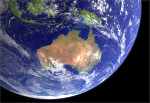The Beverage Antenna is a relatively inexpensive
but very effective long-wire receiving antenna for longwave, mediumwave, shortwave,and military reception. Harold H. Beverage
experimented with receiving antennas similar to the Beverage antenna in 1919 at the Otter Cliffs Radio Station.
By 1921, Beverage long wave receiving antennas up to nine miles (14 km) long had been installed
at RCA's Riverhead,. New York, Belfast, Maine, Belmar, New Jersey, and Chatham, Massachusettss receiver stations.
The antenna was patented in 1921 and named for its inventor Harole H. Beverage. Perhaps the
largest Beverage antenna - an array of four phased Beverges three miles (5 km) long and two miles (3 km) wide -
was built by AT&T in Houlton, Maine, for for the first trans-Atlamntic telephone system opened in 1927.
While these antennas provide excellent directivity, a large amount of space is required. Beverage
antennas are highly directional and physically far too large to be practically rotated so installations often use multiple
antennas to provide a choice of azimuthal coverage.
A Beverage consists of a wire one or two wavelengths long (hundreds of feet at HF to several
kilometres for longwave). A resistor connected to a ground rod terminates the end of the antenna pointed to the target area,
a 470 ohm non-inductive resistor provides excellent results for most soils. A 50 or 75 ohm coaxial transmission connecs the
receiver to the opposite end of the antenna through an impedance-matching transformer. Some
Beverage antennas use a two-wire design that allows reception in two directions from a single Beverage antenna. Other designs
use sloped ends where the centre of the antenna is six to eight feet high and both ends of the antenna gradually slope downwards
towards the termination resistor and matching transformer.
Prior to 1975, Australian MW stations operated on frequencies on multiples of 10 Khz, ending
in "0". European, Middle Eastern, and African stations used frequencies separated by 9 kHz, which meant that judicious
tuning and use of a Loop or Beverage antenns could yield excellent results. Stations in the Americas used 10 kHz channel spacing,
same as in Australia.
This resulted in some splendid MW reception from Europe, the Middle East and Africa during our
early morning hours, up to sunrise.
All that changed in 1976, when stations in ITU Region Three, which included Australia and
New Zealand, were required to shift their operatiions to the 9 kHz separation, identical with Euripe, the Middle East, and
Africa. American stations stayed with the 10 kHz separation.
By that time, the MW band in Australia had become heavily congested,
with most commercial stations operating 24 hrs. Some channels were occupied by as many as six stations, in various States. The
ABC then decided to put most of its stations on to 24-hr operations.
This meant that long-distance mediumwave reception in Australia became a very specialized activity
from the mid-1980s, and at a hobby level, interest from enthusiasts dropped away considerably.
The increasing level of power-line noise, general RF pollution, and spurious signals on the
mediumwave band were also major inhibiting factors.
Exceptions were for hobbyists located in rural or outback areas, ell away from RFI sources,
with the space to erect long Beverage installations or experiment with Loop antennas.
In 1993, I was forced to end my involvement in long-distance mediumwave
propagation reaearch, due to the combination of factors described above, and I dismantled my Box and Spiral Loops.
My mediumwave "career" had spanned nearly 45 years, and in that time I had
accumulated 551 QSL Verifications from stations in 113 "radio countries"
I had written many technical papers on the subject, which were published in various sources,
including the World Radio TV Handbook.

